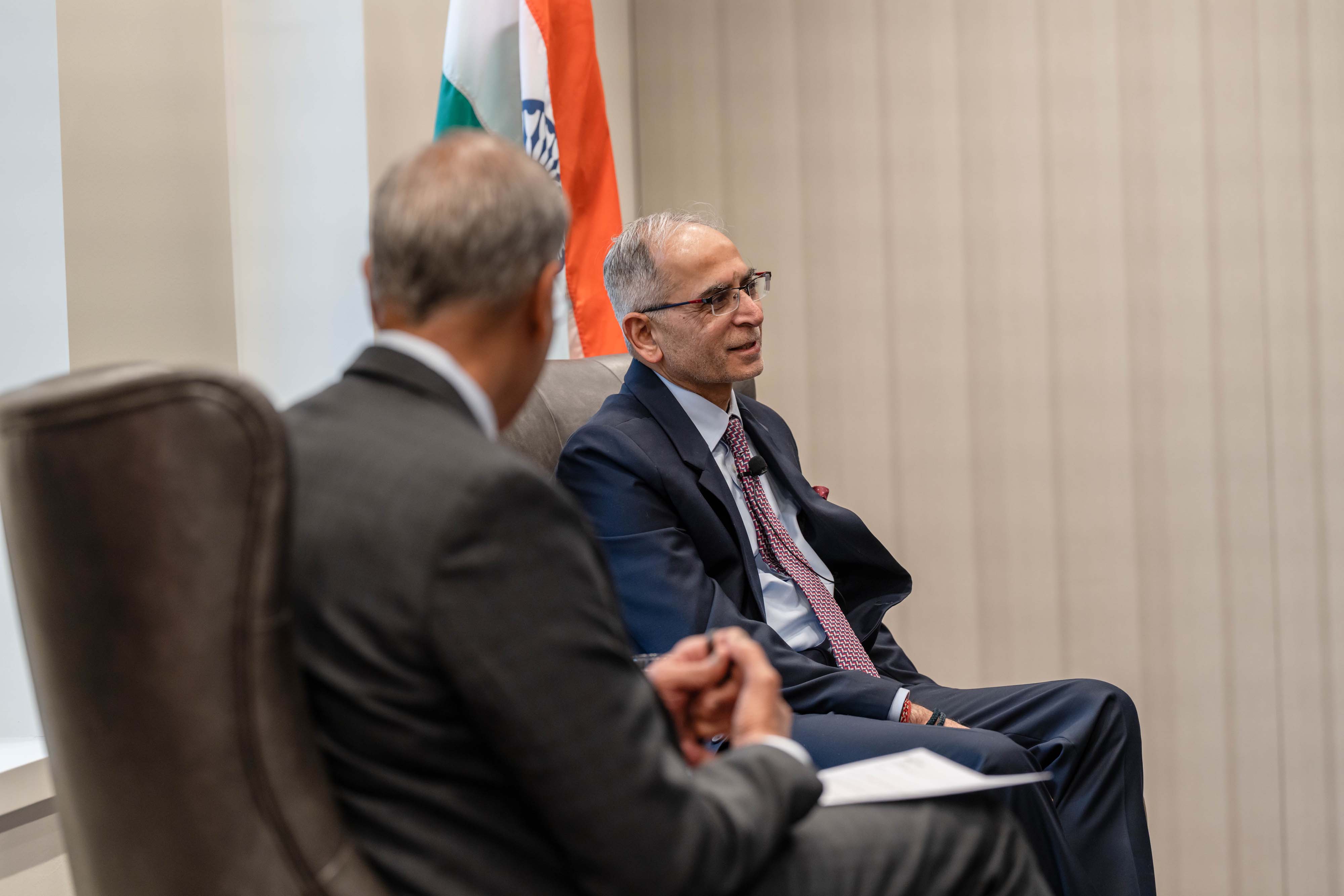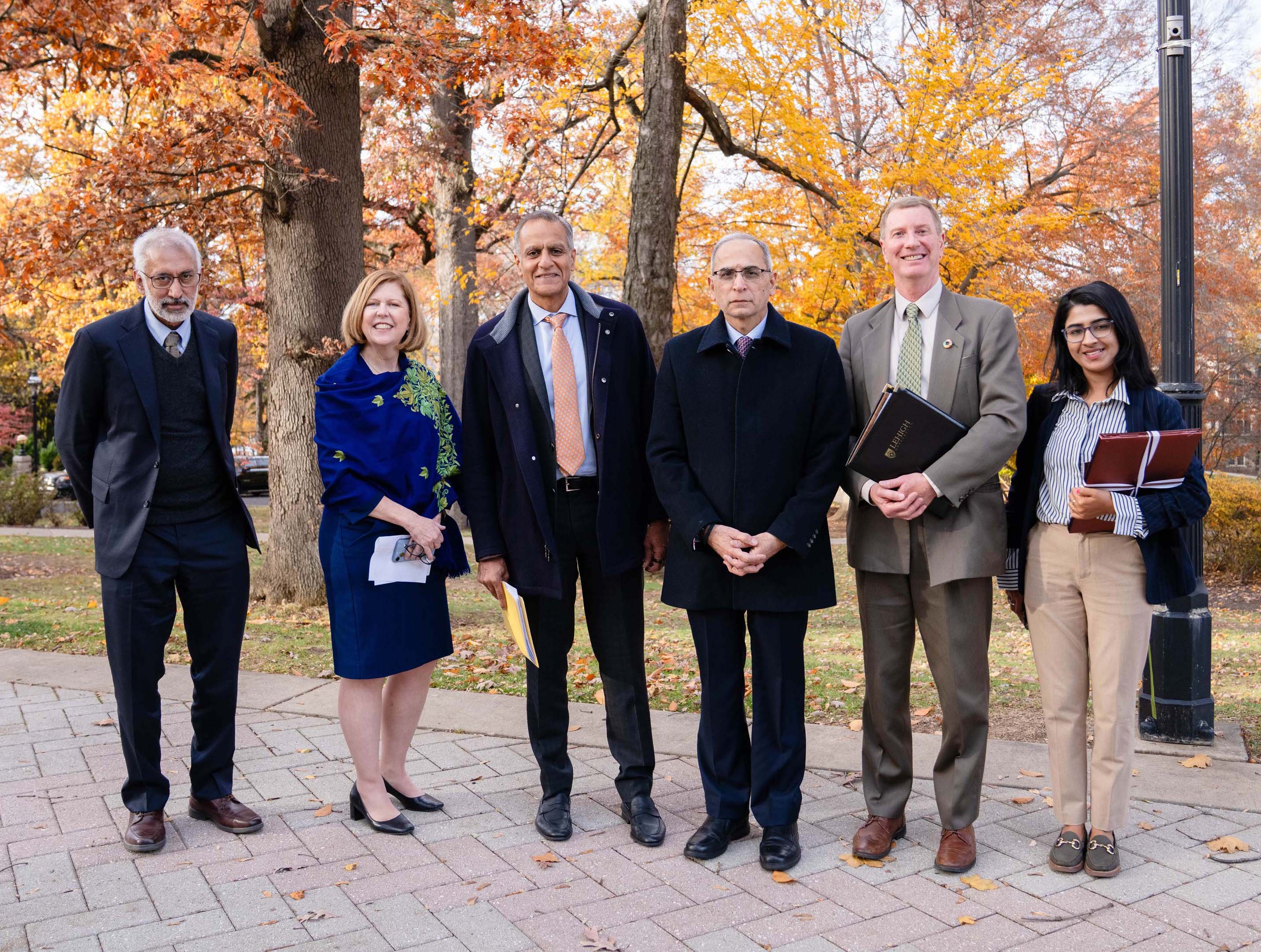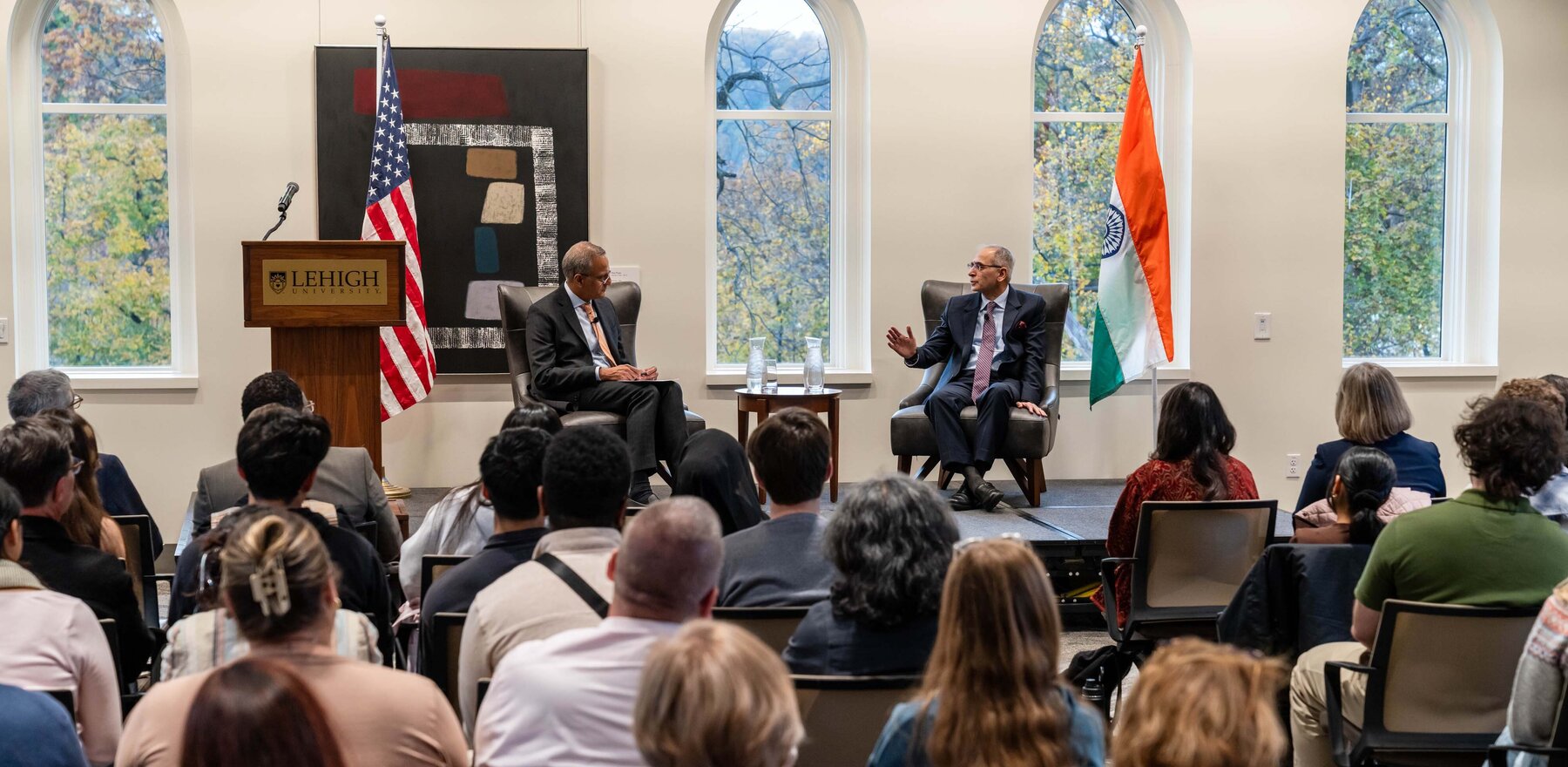During a campus conversation with students and faculty, Ambassador Vinay Kwatra emphasized education, technology, and trust as the driving forces behind the growing India–U.S. partnership.
India’s top diplomatic representative in the United States made a rare appearance at Lehigh University this week, sharing his perspectives on U.S.–India relations, economic and technological cooperation, and the growing role of higher education in connecting the two nations.

“When you land in India, the sights, smells, sounds, everything is overwhelming, but you will find a country full of robust energy,” said Vinay Mohan Kwatra, Ambassador of India to the United States. “There is a hunger, there is a drive, there is an ambition to really position India among the top countries in the world.”
More than 130 people attended a fireside chat with Kwatra at Lehigh’s University Center on Thursday, Nov. 6. The conversation was facilitated by Richard Verma ‘90, former U.S. Ambassador to India and Lehigh’s inaugural President’s Distinguished Fellow.
Education a cornerstone of partnership
Kwatra emphasized that education and academic exchange are vital to the India–U.S. partnership, describing universities like Lehigh as key connectors that strengthen people-to-people ties and drive innovation across borders. He encouraged greater two-way collaboration, inviting Americans to study and conduct research in India while recognizing the Indian diaspora’s contributions to shared academic and technological progress.
“There are almost 400,000 Indian students in the United States,” Kwatra said. “What about the U.S. students and faculty here who are interested in either studying in India or doing research or fellowship opportunities in India? … I would say to them that we would welcome you with open arms.”
Kwatra’s visit was part of the Ambassadorial Speaker Series hosted by the Lehigh University-United Nations (LU/UN) Partnership, which provides opportunities for students, faculty, and staff to develop the skills necessary to become global leaders by engaging with the United Nations through curricular and co-curricular initiatives.
Lehigh’s deepening engagement with India

Lehigh’s engagement with India spans nearly seven decades, beginning with the enrollment of its first Indian student in 1956. Today, India is one of Lehigh’s most significant global relationships, ranking among its top countries for international students and alumni worldwide, according to Cheryl Matherly, Vice President and Vice Provost for International Affairs.
“Ambassador Kwatra’s visit highlights the growing importance of the India–U.S. relationship in higher education, research, and innovation, and how Lehigh University is building on those connections to expand opportunities for our students and community members” Matherly said.
India is among the top three countries of origin for Lehigh’s international students at both the undergraduate and graduate levels. The Office of International Affairs (OIA) has established a new virtual hub to strengthen Lehigh’s engagement to India, with an emphasis on Indian student recruitment, academic partnerships, and research collaborations.
Lehigh maintains active global partnerships with several leading Indian institutions, including Ashoka University, IIT Bombay, IIT Kharagpur, OP Jindal Global University, and more. These partnerships include student exchange, research collaborations, joint curriculum development, and more.
Lehigh also engages in collaborative initiatives in India through programs such as the Global Social Impact Fellowship (GSIF), Humanitarian Design and Social Enterprise (HDSE), Transforming Education for Social & Systems Impact (TESSI), and U.N. Youth Representativee Program, among others.
Shared growth in technology, energy, and security
During his remarks, Kwatra described a confident, forward-looking India that is deepening its partnership with the United States through shared trust and expanding collaboration in defense, technology, energy, and education.
Kwatra called the Indian diaspora a “living bridge” and one of the foundation pillars of U.S.–India relations. There are an estimated five million Americans of Indian descent, and they have strengthened understanding between the two nations through their contributions across a range of professions.

Kwatra described defense and security ties between India and the United States as “truly transformative,” noting that India is now among the largest users of U.S. military aircraft and a partner in all major foundational defense agreements, with new collaboration extending into space and underwater domains.
He said this growing trust also fuels cooperation in emerging technologies such as artificial intelligence, semiconductors, and advanced research, while surging energy trade and joint efforts in renewables and infrastructure are strengthening strategic energy security.
“In India, the talk is about where we will be in 2047, when we complete 100 years of independence,” Kwatra said. “Our target is very simple in broad terms: we are a developing economy now; we want to be a developed economy by 2047.”
Kwatra joined the Indian Foreign Service in 1988 and has since built a distinguished career spanning more than 36 years. He has served in Indian Missions in Tashkent, Durban, Karachi, and Geneva, and later as Deputy Chief of Mission in Beijing from 2003 to 2006, and Director/Joint Secretary at the SAARC Secretariat in Kathmandu from 2006 to 2010.
From 2010 to 2013, he was Minister (Commerce) at the Embassy of India in Washington, D.C., before returning to New Delhi to lead the Ministry of External Affairs’ Policy Planning & Research Division and later serve as Joint Secretary in the Prime Minister’s Office from 2015 to 2017.
